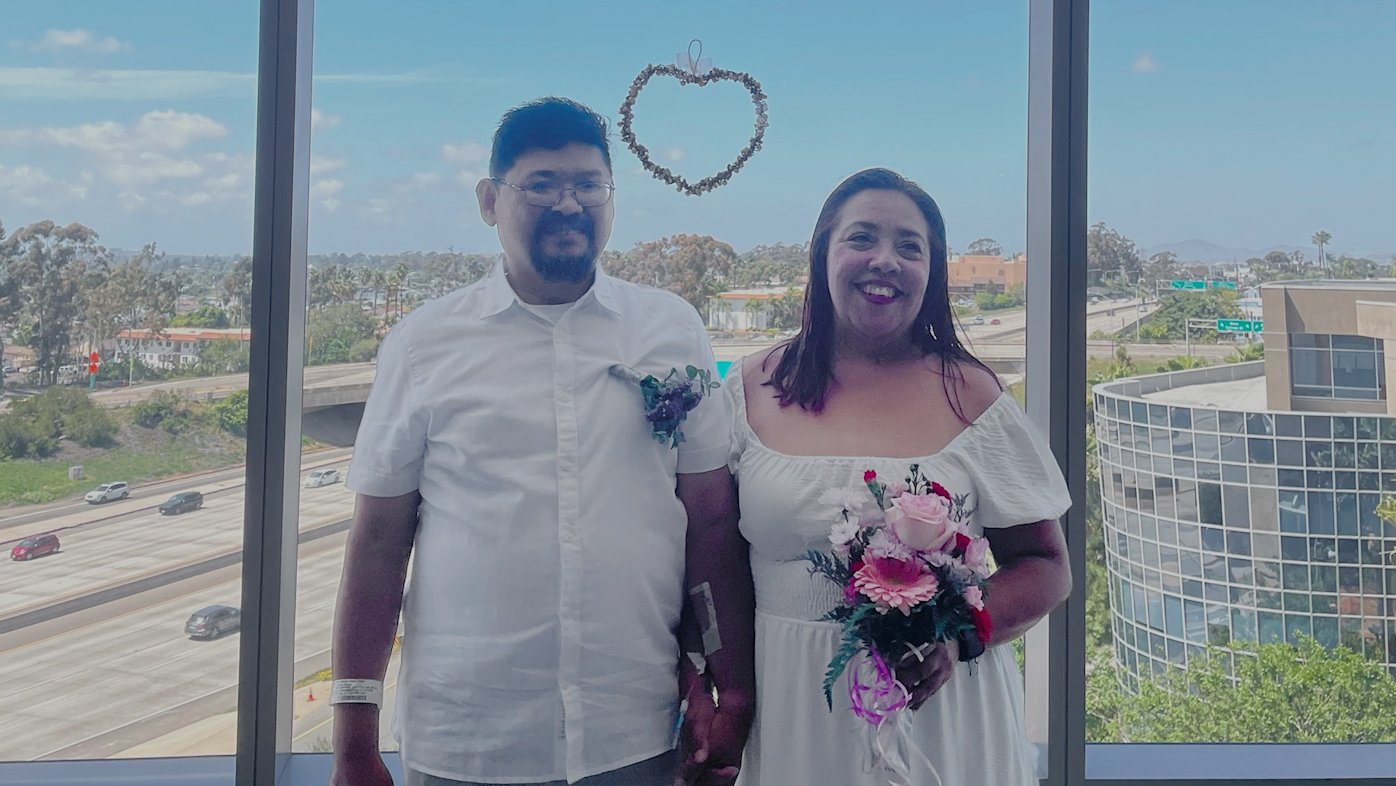
A wedding, a surgery and a testament to love
How one couple turned a hospital stay into a moment of lasting love with help from the Sharp care team.
Nearly 800,000 people in the United States suffer from a stroke each year. This neurological disorder is the fifth leading cause of death in the country. Stroke causes more serious, long-term disabilities than any other disease.
To better understand this disorder, Lynn Novencido, former program manager of neurology and orthopedics at Sharp Chula Vista Medical Center, provides a brief explanation on the causes of stroke, how to prevent one, and more.
What is stroke?
Stroke occurs when an artery to the brain bursts or becomes clogged, thereby reducing or interrupting the blood flow to a part of the brain, resulting in neurological deficits.
What are the symptoms of a stroke?
Stroke can be characterized by one or all of the following symptoms that occur extremely suddenly:
Numbness or weakness of the face, arm or leg, especially on one side of the body
Confusion or trouble speaking
Trouble seeing with one or both eyes
Issues with walking, experiencing dizziness, loss of balance or coordination
Severe headache with no known cause
Stroke is a serious emergency and it's very important to act fast if you notice these symptoms occurring in your loved one. If any occur, call 911 immediately, as it's critical to receive care as soon as possible.
What are the risks of stroke?
To better identify these risk factors, we need to divide them into two separate groups: modifiable risks and non-modifiable risks.
Modifiable risks include:
High blood pressure
High cholesterol
Certain blood disorders
Atrial fibrillation or other heart diseases
Taking birth control
Lifestyle habits, such as excessive alcohol consumption, smoking or illegal drug use
Non-modifiable risks include:
Advancing age
Gender
Ethnicity
Heredity
While we can't help with genetics or age, it's important to be cognizant of certain lifestyle choices and how they can negatively affect our health. To help lower the risk of stroke, don't smoke, maintain a balanced diet, exercise regularly and monitor your blood pressure regularly.
What are the effects of stroke?
Many people who experience a stroke will suffer from weakness or temporary paralysis on one side of the body, difficulty speaking or swallowing, loss of emotional control, and cognitive or behavioral changes.
If I have a stroke, will I recover?
In most cases, yes. Effects of stroke are the greatest immediately after the event occurs. Recovery times vary based on the extent of injury to the brain. Some improvement is spontaneous; for effects lasting longer than anticipated, rehabilitation can help.
Prevention is key
The human brain is powerfully complex. Strokes can happen to anyone, at any time. That's why prevention is a staple of our care at Sharp.
Lynn Novencido retired from Sharp in 2018.
For the media: To talk with a Sharp doctor about stroke or other neurological disorders, contact Erica Carlson, senior public relations specialist, at erica.carlson@sharp.com.

The Sharp Health News Team are content authors who write and produce stories about Sharp HealthCare and its hospitals, clinics, medical groups and health plan.

Lynn Novencido is the program manager of neurology and orthopedics at Sharp Chula Vista Medical Center.

Our weekly email brings you the latest health tips, recipes and stories.